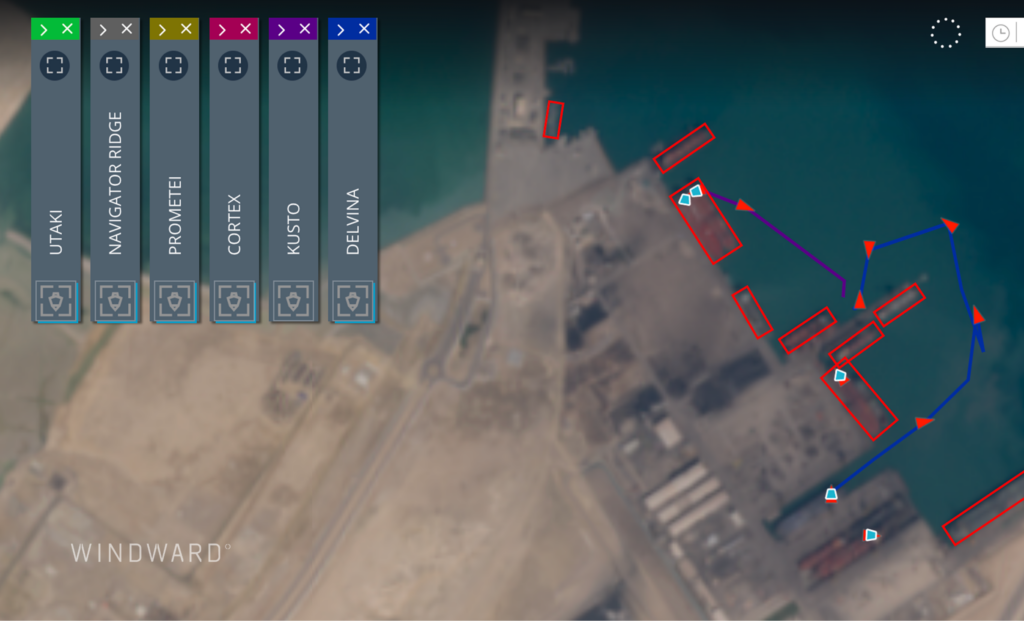Sanctioned Russia-Trading Tankers Find Refuge in Duqm, Oman

What’s inside?
Shadow Fleet Tankers Cluster at Duqm
Six sanctioned Russia-trading tankers are signaling that they are berthed at the Oman port of Duqm, amid an escalation in deceptive shipping practices in the area as key buyers in India and China pause or review oil purchases.
The tankers, all part of Russia’s sanctions-evading shadow fleet, are broadcasting Automatic Identification System (AIS) signals placing them at berths in Duqm, with five arriving between October 27 and November 11.
They are Utaki (IMO 9262924), Navigator Ridge (IMO 9321689), Prometei (IMO 9296597), Cortex (IMO 9291250), and Kusto (IMO 9308833). A sixth tanker, Delvina (IMO 9331153), signaled its arrival on September 24 and has broadcast AIS positions at various berths at the port since then.

Escalating Sanctions Pressure and Concealment Tactics
Utaki, a 2002-built Aframax tanker formerly known as Linda and Bonnie, is flagged in Sierra Leone and is sanctioned by the UK and EU, but not the U.S.
The tankers’ movements are yet another sign of the upheaval and disruption to Russian oil sales triggered by UK and U.S. sanctions imposed on Russia’s two largest oil producers, Rosneft and Lukoil, on October 15 and 22.
Rosneft and Lukoil together account for more than half of Russia’s 3.5 million bpd of crude exports.
Waters off Oman have long been used for covert ship-to-ship transfers of sanctioned oil, typically from Iran, but Russia’s use of the area was first observed in late 2024 and has continued into 2025.
Tankers use GNSS manipulation, known as spoofing, in Omani waters to conceal STS activities. Russian oil is transferred onto so-called “clean” tankers that have not been sanctioned for onward shipment to ports in India and China, obscuring the origin of both the cargo and the vessel.
With more than 500 tankers cumulatively blacklisted by the EU, UK, and U.S. from January through September, more than half of Russia’s crude was lifted on sanctioned tankers in October, according to preliminary data from commodities tracking company Vortexa compiled by Windward.
Nine sanctioned, Russia-trading tankers were among 21 that have signaled via AIS that they have called at Duqm port in the past 30 days, Windward data shows.
Trending
- The EU’s 18th Sanctions Package Lookback Started. Trading Russian Products? You're At Risk. Nov 24, 2025
- Tanker Freight Rates Hit Five-Year High Amid Russian Oil Sanctions Shake-Out Nov 6, 2025
- Sanctioned, Stateless, and Still Sailing: Expert Insights from the Frontlines of Maritime Sanctions Nov 3, 2025












